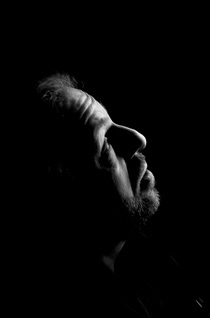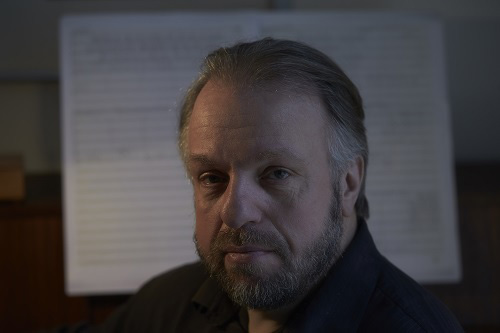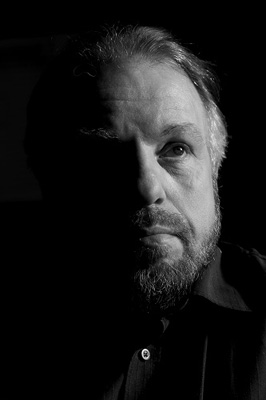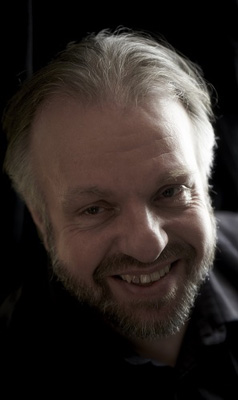Sunleif Rasmussen
b. 1961
Faroese
Summary
Rasmussen’s music may not seem inherently Faroese, but deep within the musical structure, traces of accumulated Faroese folk songs linger, reborn in new forms. His compositions have a natural complexity, combining jazz with the rich Faroese folk tradition as well as with electroacoustic and spectral music. The result is highly evocative, beautiful, and not difficult to listen to.
The power and complexity of his music often reflects nature, shimmering with energy and movement, as is evident in titles like Symphony no. 1: Oceanic Days (1995) and Vogelstimmung (2011).
Critical Acclaim
...The composer has [...] placed and established Faroe Islands on the musical map - Peter Päffgen, Gitarre & Laute...Sunleif Rasmussen incorporates the Faroese nature in his music with a tonal language originating from old songs and bird screams - Lotte Bichel, Berlingske tidende
Biography
The Faroese composer Sunleif Rasmussen, more than anyone, has put the small wind-swept Atlantic islands on the musical map of the world. In 2002 he was the first Faroese ever to win the Nordic Council’s Music Prize for his Symphony no. 1 Oceanic Days (1995). In many ways Sunleif Rasmussen’s aesthetic approach gives meaning to the concept of Nordic music.
Sunleif Rasmussen was born on Sandoy – ‘Sand Island’ –and the Faroese landscape and culture both play an important role in Sunleif Rasmussen’s music; not in the sense that the music paints the fury of the elements, the omnipresent Atlantic Ocean or audibly draws on Faroese folk music and mythology. The references and associations are far more subtle. The national melodic material is split up into its smallest fragments and most of all has the function of musical building blocks. Nature is an important framework of understanding and thinking for the music and aesthetics.
In the symphony Oceanic Days percussion and electronics are placed around the audience. Sunleif Rasmussen himself describes the underlying idea as follows: "The audience is like a group of islands at the centre of the events, surrounded by sound.” In the period 2008-2009 Sunleif Rasmussen was composer-in-residence for the South Jutland Symphony Orchestra and in the period 2009-2010 for Ars Nova Copenhagen.
A long succession of prominent orchestras and ensembles are at present commissioning and playing works by Sunleif Rasmussen: the BBC Symphony Orchestra, the Helsinki Philharmonic, the Lapland Chamber Orchestra, Theatre of Voices and the Danish National Vocal Ensemble.
The succession of conductors and soloists who have performed Sunleif Rasmussen’s music is also impressive: John Storgårds, Paul Hillier, the recorder virtuoso Michala Petri, the singer Bo Skovhus and others.
Hjarne Fessel 2014
Sunleif Rasmussen was born on Sandoy – ‘Sand Island’ –and the Faroese landscape and culture both play an important role in Sunleif Rasmussen’s music; not in the sense that the music paints the fury of the elements, the omnipresent Atlantic Ocean or audibly draws on Faroese folk music and mythology. The references and associations are far more subtle. The national melodic material is split up into its smallest fragments and most of all has the function of musical building blocks. Nature is an important framework of understanding and thinking for the music and aesthetics.
In the symphony Oceanic Days percussion and electronics are placed around the audience. Sunleif Rasmussen himself describes the underlying idea as follows: "The audience is like a group of islands at the centre of the events, surrounded by sound.” In the period 2008-2009 Sunleif Rasmussen was composer-in-residence for the South Jutland Symphony Orchestra and in the period 2009-2010 for Ars Nova Copenhagen.
A long succession of prominent orchestras and ensembles are at present commissioning and playing works by Sunleif Rasmussen: the BBC Symphony Orchestra, the Helsinki Philharmonic, the Lapland Chamber Orchestra, Theatre of Voices and the Danish National Vocal Ensemble.
The succession of conductors and soloists who have performed Sunleif Rasmussen’s music is also impressive: John Storgårds, Paul Hillier, the recorder virtuoso Michala Petri, the singer Bo Skovhus and others.
Hjarne Fessel 2014
News
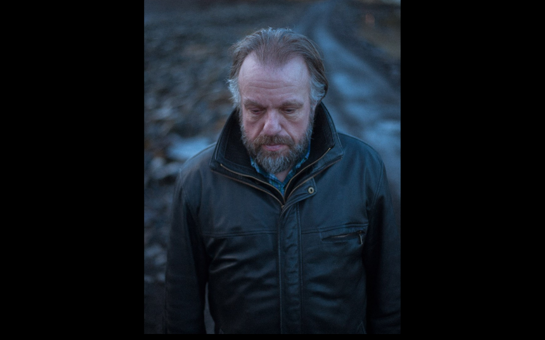
- Chamber opera by Sunleif Rasmussen premieres
- 16th December 2024
- Opera based on the legends of Nibelung to be performed in the Faroe Islands

- Rasmussen, Nørgård and Saariaho at World New Music Days
- 19th June 2024
- World premiere by Sunleif Rasmussen at World New Music Days 2024 in Faroe Islands

- Sunleif Rasmussen premieres unique work in Faroese Tunnel
- 20th December 2023
- Opening of long-awaited tunnel with music by Sunleif Rasmussen

- Season Highlights 2016-2017
- 1st September 2016
- We’re are delighted to be able to announce the plans for our composers during the coming season. You can view the Season Highlights 2016-2017 brochure from Music Sales Classical online. New signings include Donnacha...

- 3 new wind concertos celebrating Carl Nielsen
- 21st October 2015
- Carl Nielsen was close friends with the members of the Copenhagen Wind Quintet. He had planned to write a solo concerto for each but only finished the flute concerto and the clarinet concerto before his death in...
Performances
29th April 2025
- Chorals and DancesCountry Premiere
- PERFORMERS
- Lapland Chamber Orchestra
- CONDUCTOR
- John Storgårds
- LOCATION
- Korundi Hall, Rovaniemi, Finland
Features

- Our Earth | Focus on...Climate Change
- Celebrate the environmental consciousness of Wise Music Group composers as we explore the meeting of art and activism in compositions which echo the urgent call of our planet.
Photos
Discography
- LabelDacapo
- Catalogue Number8.226690
- ConductorPaul Hillier
- EnsembleConcerto Copenhagen / Theatre of Voices
- SoloistMichala Petri, recorder
- Released28th February 2025
- Works
- LabelOUR Recordings
- Catalogue Number6.220674
- ConductorStephen Layton / Clemens Schuldt / Henrik Vagn Christensen
- EnsembleEsbjerg Ensemble / Danish National Vocal Ensemble / Lapland Chamber Orchestra / Aalborg Symphony Orchestra
- SoloistMichala Petri
- Released9th April 2021
- Works
- LabelDanacord
- Catalogue NumberDACOCD 880
- EnsembleHelge Slaatto / Piano / violin & Anne Mette Stæhr
- ReleasedJanuary 2021
- Works
- LabelDacapo
- Catalogue Number8.226133
- EnsembleAldubaran Ensemble
- SoloistJákup Lützen
- Released28th February 2020
- Works
- LabelDacapo
- Catalogue Number8.226175
- ConductorJohn Storgårds
- EnsembleHelsinki Philharmonic Orchestra
- SoloistCyndia Sieden, Sopran; Bo Skovhus, Bariton; Akademiska Sångföringen
- Released11th November 2016
- Works
- LabelOUR Recordings
- Catalogue Number6.220613
- ConductorClemens Schuldt
- EnsembleLapland Chamber Orchestra
- SoloistMichala Petri (recorders)
- ReleasedAugust 2015
- Works
- LabelOUR Recordings
- Catalogue Number6.220609
- ConductorHenrik Vagn Christensen
- EnsembleAalborg Symphony Orchestra
- SoloistMichala Petri (recorders)
- Released2015
- Works
- LabelDacapo
- Catalogue Number6.220640
- EnsembleTrio Gáman
- ReleasedOctober 2013
- Works
- LabelOUR Recordings
- Catalogue Number6.220605
- ConductorStephen Layton
- EnsembleDanish National Vocal Ensemble
- SoloistMichala Petri (recorders)
- ReleasedNovember 2011
- Works
- LabelDacapo
- Catalogue Number6.220506
- ConductorHannu Lintu
- EnsembleDanish National Symphony Orchestra
- ReleasedFebruary 2005
- Works
Songs of Solitude

Territorial Songs

Nordic Songs and Romances

Andalag

Symphony No. 2 "The Earth Anew"

Nordic Sound

Danish & Faroese Recorder Concertos

Early & Late

The Nightingale

Sunleif Rasmussen - Orchestral Works

1/2

